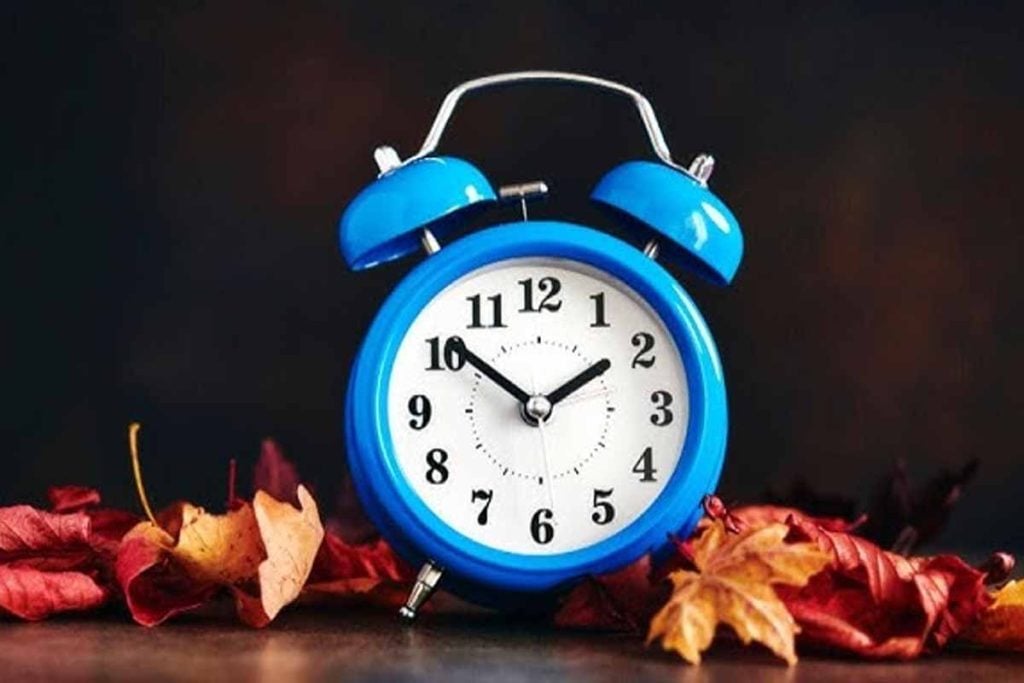Evenings shrink, porch lights click on sooner, and routines feel slightly off. The question returns like the season itself: when do we fall back, and what changes with the time change? Here’s a clear guide to timing, effects, rules, and the debate shaping what comes next, so you can plan your sleep, commute, and after-work time without guesswork.
How the clock shift works this fall
Daylight saving time lasts about eight months under the Uniform Time Act of 1966. In 2025, it runs from March 9 to November 2. Across most of the United States, people still move their clocks forward in spring and back in fall. Yet more and more voices say the ritual feels outdated — that it’s time for one consistent, year-round schedule instead.
The fall time change turns clocks back one hour. That flip moves sunrise earlier and sunset earlier, which helps mornings feel brighter as days shorten. Because the light comes sooner, school arrivals and early commutes see more dawn. Even so, evenings darken faster, so outdoor plans after work need earlier starts or better lighting.
People often ask why we still do it. The goal was simple: shift daylight toward summer evenings, then return light to winter mornings. That design still shapes daily life, even while debate grows about risks, routine friction, and the cost of switching. As days shorten, the system’s trade-offs become obvious at dinner time.
What the time change does on Nov. 2, 2025
At 2:00 a.m. on Sunday, November 2, clocks fall back to 1:00 a.m. You gain one extra hour that night. Many people use it for sleep, though it can also help with early shifts or quiet tasks. Phones and many devices update on their own, while ovens and cars usually need a manual turn.
Shifting back pushes dawn earlier, which can steady morning travel and school drop-offs. Evenings, though, lose light. Late practices, dog walks, and errands slide into darkness sooner, so reflective gear, porch lighting, and earlier departures matter. Small changes at home—timers, brighter entry lights, charged headlamps—make the first week easier and safer.
The spring move works the other way: one hour forward, one hour lost that morning. The fall return gives it back. That “back one, forward one” rhythm is why calendars mark both Sundays. The system sounds simple, yet it touches sleep quality, commute safety, and mood, which keeps the public debate alive.
Routines, safety, sleep, and the body’s clock
Your body likes regular cues, so even a small shift can ripple through sleep. Treat the time change like mild jet lag. Keep meals steady, get morning light, and limit late caffeine. Because dawn comes earlier, a short morning walk helps your circadian rhythm settle while your alarm still rings at the same wall time.
Families notice the switch first thing Monday. Brighter mornings help kids wake, while earlier dusk needs new habits for activities. Coaches, sitters, and carpools run smoother when plans adjust a week ahead. Inside homes, move timers, check hallway bulbs, and place a small light by stairways. Clear steps cut trips and falls.
Safety groups often highlight visibility. Drivers meet darker evening commutes, which calls for slower turns and patient crosswalk stops. Pedestrians and cyclists benefit from reflective bands and steady lights. Small office changes help too: team calendars with updated meeting slots and daylight-aware breaks reduce friction as routines settle into November.
Debates, laws, and the future of the time change
Policy keeps shifting, even if clocks still do. The Sunshine Protection Act sailed through the Senate back in 2022, but it hit a wall in the House. It was brought back in January 2025 and still hasn’t made it through. Meanwhile, Pennsylvania’s Senate pushed Congress this past March to stop the twice-a-year clock switching, after their own 2023 attempt at permanent daylight saving time went nowhere.
Across the country, twenty-nine states have pushed legislation to stop switching. The argument splits: permanent daylight saving means later sunsets, more evening time, and, many say, better after-work life. Permanent standard time aligns more closely with biology and puts more light on winter mornings for safer school starts and healthier sleep patterns.
Politics reflect that split. In December 2024, Donald Trump said he would work to end daylight saving and favor standard time. In March, he called the issue “50/50.” In April, he urged Congress to make DST permanent and said switching is a costly hassle. The public remains similarly divided, so clocks still move.
Who observes it, and what dates still matter now
Most states follow daylight saving time, Pennsylvania, New Jersey, and Delaware included. Hawaii opts out completely, and most of Arizona sticks with standard time year-round. The U.S. territories—American Samoa, Guam, the Northern Mariana Islands, Puerto Rico, and the U.S. Virgin Islands—don’t bother with the clock changes either. This means their schedules stay consistent all winter long.
As the season deepens, people notice darkness near dinner. Many see nightfall around 6 p.m., even before the switch. After the time change, that shift becomes official. If you plan evenings outside, move start times earlier and build in lighting. For sunrise and sunset details, use a local calculator tied to your city.
One more date anchors winter: the solstice on Sunday, December 21, 2025. That day is the year’s shortest, with about 9 hours and 17 minutes of daylight. After that, daylight lengthens again, slowly at first, then faster in January. A small calendar note helps you track that upward curve week by week.
A steady way to adapt without losing what matters most
Sleep wins when you keep bedtime stable, and plans work when lights and calendars adjust ahead of the time change. Because mornings brighten and evenings tighten, shift tasks earlier, pair reflective gear with routines, and check devices the day before. Small steps protect rest, safety, and the after-work time you value.
